PhysicsAI
New Features
- Models Can Now be Trained to Predict Multiple Responses
- You can now train a single physicsAI model for predicting multiple
results, such as stress and displacement. You can select multiple check
boxes in the Outputs section of the model training window. This feature
can save considerable time and effort.
Figure 1. 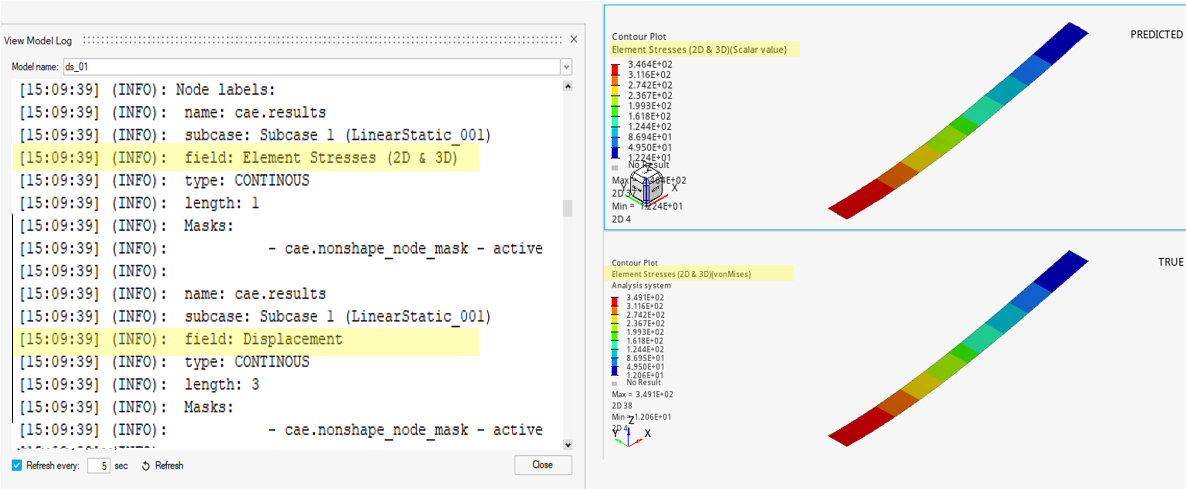
- Improved Visualization for Custom Outputs (KPIs)
- The visualization for custom outputs has now been enhanced in the form
of scatter plots and continuous curves. This is especially useful for
time dependent responses. Additionally, results for all test data-points
are displayed simultaneously for easy comparison.
Figure 2. 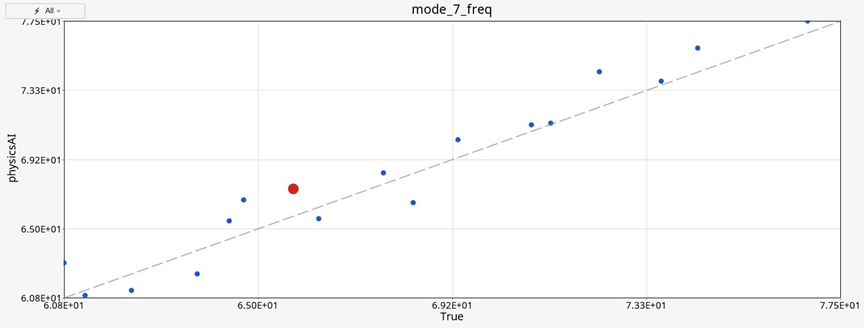
Figure 3. 
- Support for Modal Analysis
- PhysicsAI now supports modal analysis predictions, including out of
phase results.
Figure 4. 
- Transfer Learning is Now Visible by Default
- Transfer learning is now enabled by default in the training window.
Transfer learning enables the reuse of knowledge from previous models
resulting in better accuracy and faster convergence of subsequent model
trainings. The width, depth, and input features in the new model must be
equivalent to the pre-trained model for it to be reusable. The output
field dimensionality and number of timesteps can be different from the
pre-trained data.
Figure 5. 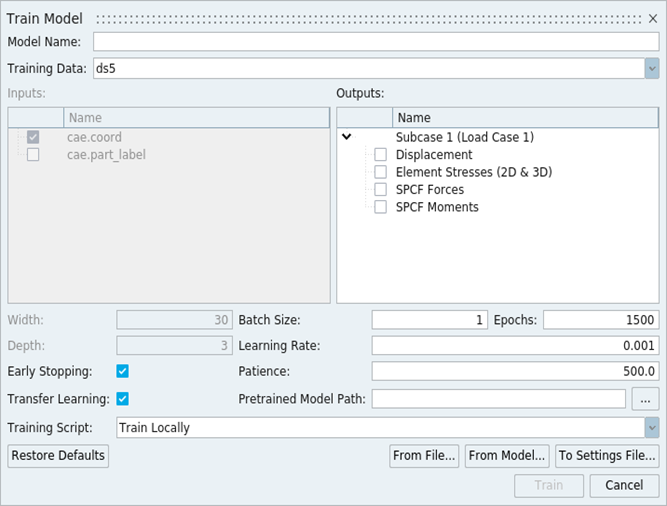
Enhancements
- Visualization Settings Saved in HyperView
- The predicted and true results now move synchronously in HyperView.
Additionally, sections and hidden components are also synced. This saves
effort, as it would otherwise require manual orientation.
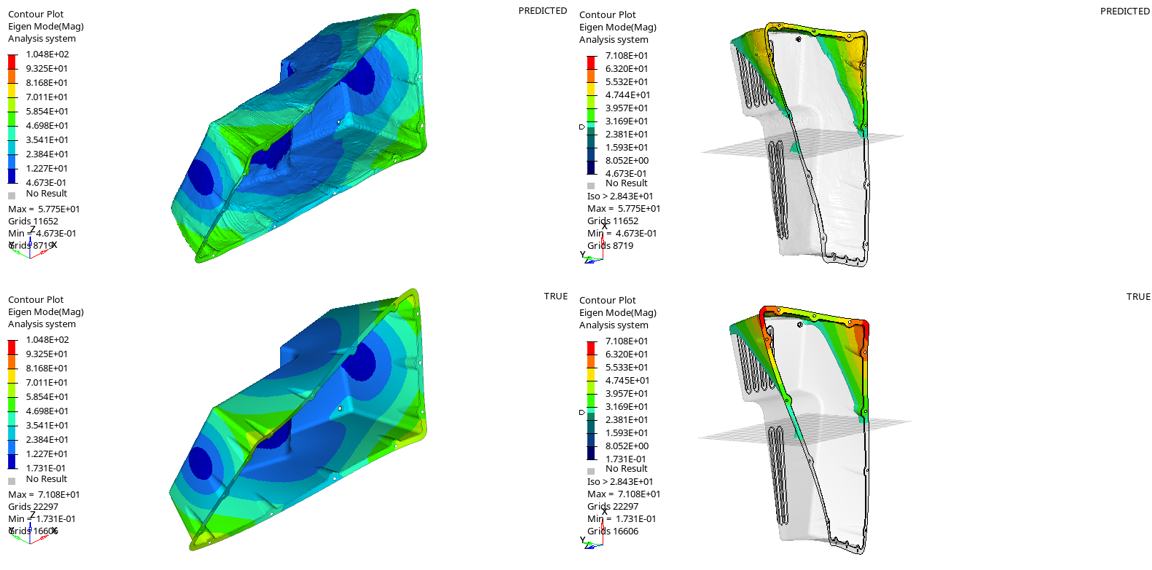
- Predictions on Altair One
- PhysicsAI on Altair One now supports predictions in addition to
training. An interactive visualization of results is available similar
to the experience in HyperMesh.
Figure 6. 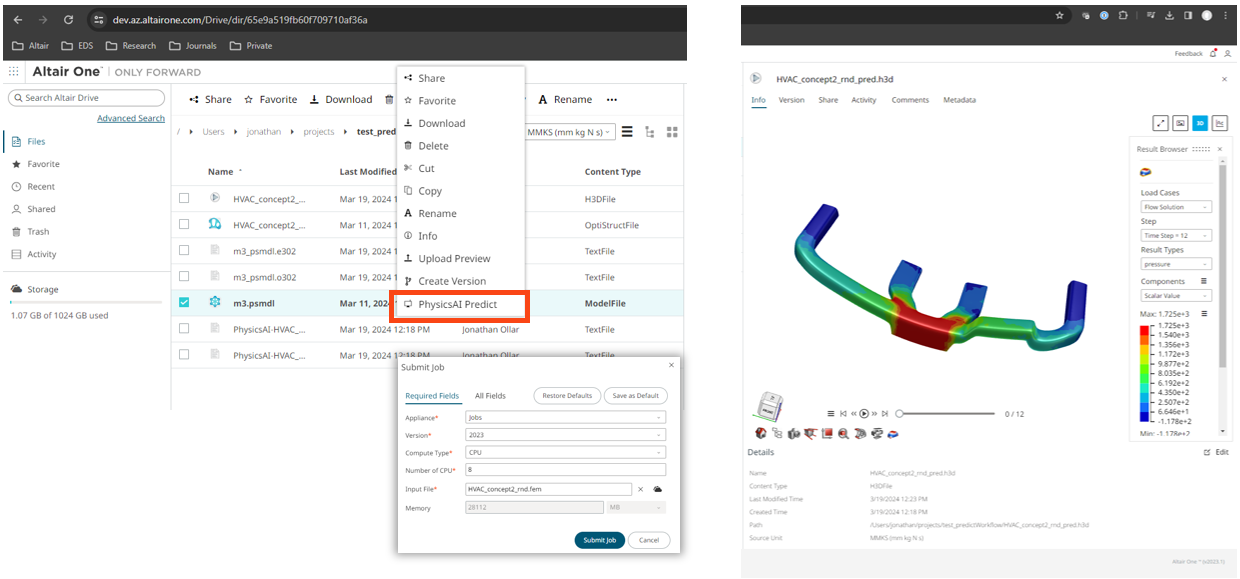
- Training Using Physical Test Data
- Previously, physicsAI required contoured results data when training on custom outputs. Mesh-only files (.fem, .rad, and so on) without any contour data can now be used for training on KPIs.
Known Issues
In dark mode, the test animations comparison will not display until the Model Testing dialog is closed.